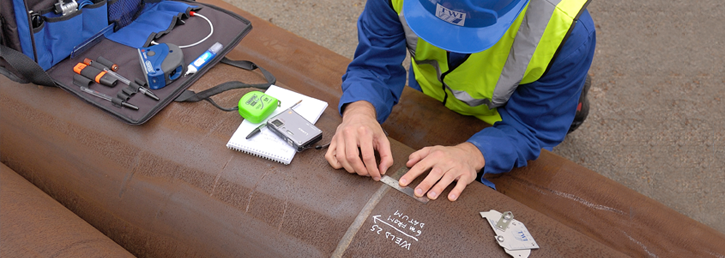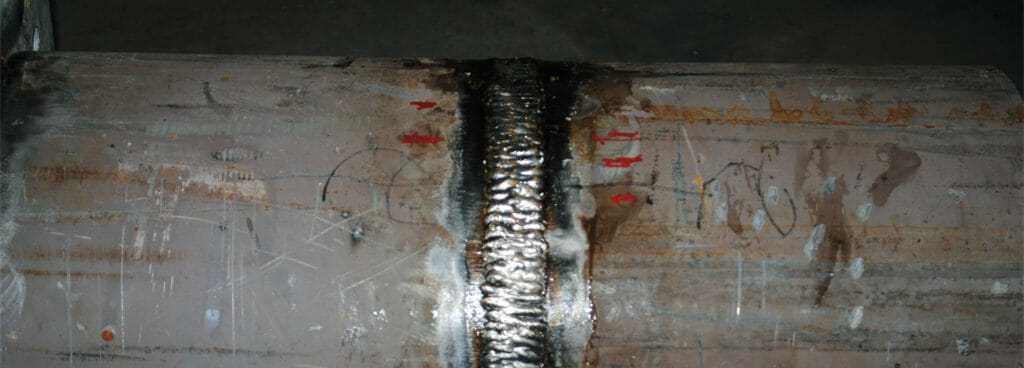A Comprehensive Overview to Welding Inspection Madison Criteria
Exploring Advanced Tools and Approaches for Accurate Welding Examination
In the world of welding examination, the quest of accuracy and reliability is extremely important, stimulating the advancement of sophisticated devices and techniques. Technologies such as phased array ultrasonic testing and electronic radiography are changing issue discovery, supplying unrivaled precision in characterizing welding imperfections. Laser scanning innovations and computerized examination systems, outfitted with man-made intelligence, are redefining the landscape by reducing human mistake and boosting security procedures. As these sophisticated techniques proceed to progress, they guarantee not only to change evaluation methods but additionally to increase fascinating questions about the future of quality control in industrial applications.
Ultrasonic Examining Developments
Ultrasonic screening innovations regularly stand for the leading edge of advancements in welding inspection technologies. These innovations have considerably boosted the capacity to detect and assess interruptions within welded structures, making sure enhanced integrity and safety.

Additionally, improvements in software application formulas for information analysis have actually enhanced the precision of flaw detection and sizing. Automated ultrasonic screening systems now provide high-resolution imaging, allowing thorough evaluations of weld quality. These systems are commonly integrated with advanced visualization tools, which assist in the analysis of results.
Radiographic Inspection Strategies
While ultrasonic screening developments have actually set a high requirement in non-destructive exam, radiographic inspection strategies continue to play an indispensable duty in welding inspection by using unique insights into material honesty. Radiographic testing (RT) employs making use of X-rays or gamma rays to permeate products, developing a radiograph that aesthetically stands for the internal structure of a weld. This imaging ability is vital for detecting subsurface flaws such as porosity, additions, and fractures that might not be noticeable via surface area inspections.
The procedure entails putting a radiation source on one side of the weld and a detector on the contrary side. Variations in material density and density impact the attenuation of the rays, producing a different image that exactly marks problems. RT is especially advantageous for checking intricate geometries and thick areas where various other methods might fail.
Despite its performance, radiographic assessment needs to be conducted with strict adherence to safety protocols due to the dangerous nature of ionizing radiation. The interpretation of radiographs requires competent workers, as the high quality of the analysis directly affects the reliability of the inspection. As a result, ongoing improvements in electronic radiography are improving photo quality and analysis performance, enhancing RT's crucial role in making certain weld top quality.
Laser Scanning Advances
Welcoming laser scanning modern technology in welding assessment has reinvented the assessment of weld top quality and honesty. This innovative technique offers a non-contact, high-resolution means of capturing thorough 3D data of weld surface areas. Unlike typical evaluation techniques, laser scanning provides rapid data acquisition, significantly enhancing the effectiveness and precision of weld assessments. The modern technology utilizes laser beams to develop specific 3D versions, which are vital for extensive analysis of weld measurements, surface area abnormalities, and possible problems.
Laser scanning advancements have actually resulted in significant enhancements in defining and identifying surface area defects such as porosity, absence of fusion, and undercuts. The high-resolution data allows examiners to carry out extensive analyses, making sure that welds satisfy rigid sector criteria. Furthermore, this method supports the advancement of digital records, promoting lasting top quality guarantee and traceability.
In addition, laser scanning modern technology integrates flawlessly with software application solutions made for automated problem discovery and evaluation. The resultant information can be quickly shared and assessed, promoting joint decision-making processes. As markets continue to demand greater standards for weld high quality, laser scanning continues to be at the forefront, supplying unmatched precision and performance in welding assessment.
Automated Inspection Solutions

Automated assessment systems provide the advantage of uniformity, getting rid of human error and subjectivity from the examination process. They are developed to run in different atmospheres, from production floorings to remote area sites, making certain thorough insurance coverage. Welding Inspection Madison. These systems can be configured to adhere to details welding standards and standards, offering comprehensive reports and documents for quality assurance purposes
In addition, the combination of cloud-based systems helps with the storage space and analysis of huge amounts of assessment data. This makes it possible for pattern evaluation and predictive upkeep, permitting producers to resolve prospective concerns before they rise. The adoption of automatic assessment systems is a critical step towards improving the dependability and efficiency of welding processes in industrial applications.

Enhancing Security and Efficiency
A significant element of improving security and effectiveness in welding evaluation lies in the assimilation of ingenious innovations that enhance procedures and alleviate dangers. The adoption of advanced non-destructive testing (NDT) methods, such as ultrasonic screening, phased selection ultrasonic screening (PAUT), and radiographic screening, plays a crucial duty in ensuring architectural honesty without compromising the safety of the personnel involved. These techniques enable for thorough inspections with very little downtime, minimizing prospective dangers related to conventional approaches.
In addition, the application of real-time data analytics and artificial intelligence formulas has actually transformed the means assessment data is interpreted. By utilizing predictive analytics, possible problems can be identified prior to they manifest right site into important failures, ensuring timely treatments and maintenance. This aggressive technique considerably boosts functional efficiency and safety and security in welding processes.
Moreover, remote assessment technologies, including drones and robot spiders equipped with high-resolution electronic cameras, enable examiners to analyze hard-to-reach areas without exposing them to dangerous problems. This not just boosts inspection accuracy however additionally minimizes human danger. By leveraging these innovative devices and approaches, industries can achieve higher security criteria next and operational performance, ultimately resulting in more lasting and reliable welding evaluation methods.
Verdict
The integration of sophisticated tools and methods in welding assessment significantly enhances problem detection and makes certain structural integrity. Welding Inspection Madison. Innovations such as phased range ultrasonic testing, electronic radiography, and laser scanning enhance flaw characterization, while automated assessment systems and AI lower human error. Remote technologies facilitate safe analyses in dangerous atmospheres, advertising an aggressive upkeep approach. These developments not just enhance examination performance however likewise add to boosted safety and security and high quality assurance in commercial welding applications.

Ultrasonic testing technologies often stand for the forefront of innovations in welding evaluation modern technologies.While ultrasonic testing technologies have established a high standard in non-destructive exam, radiographic inspection methods proceed to play an essential duty in welding inspection by providing unique understandings into material integrity.Accepting laser scanning innovation in welding examination has reinvented the analysis of weld top quality and integrity. As markets continue to require greater criteria for weld top quality, laser scanning remains at the forefront, supplying unmatched precision and performance in welding inspection.
Automated evaluation systems offer the advantage of consistency, getting rid of human mistake and subjectivity from the examination procedure.